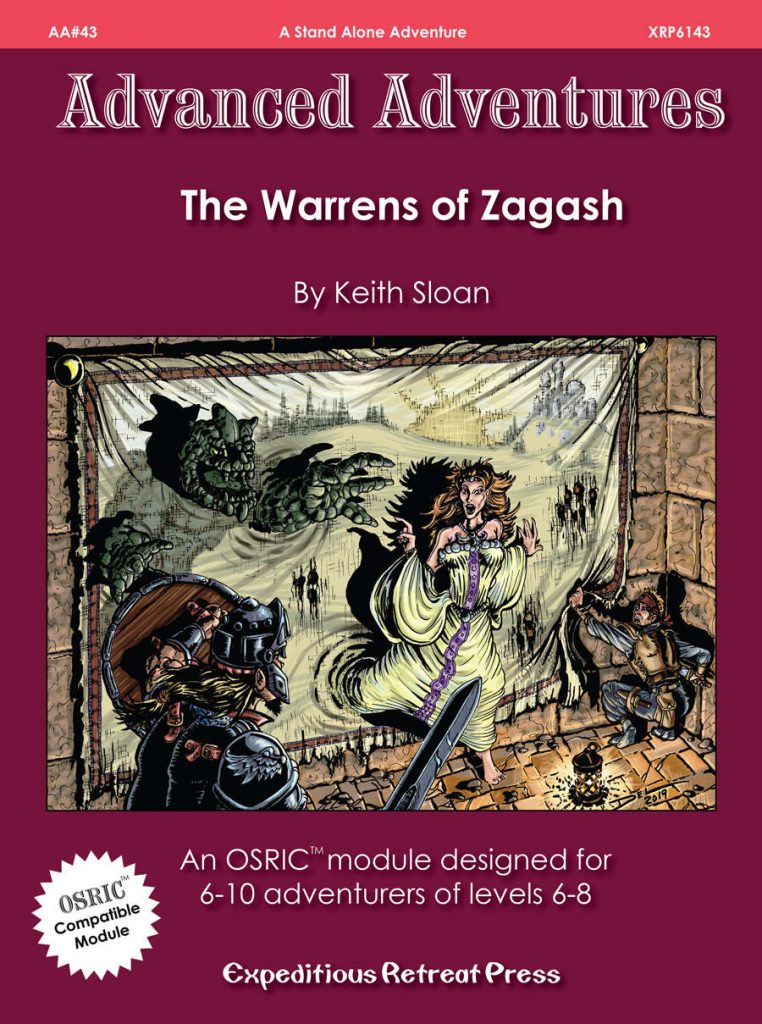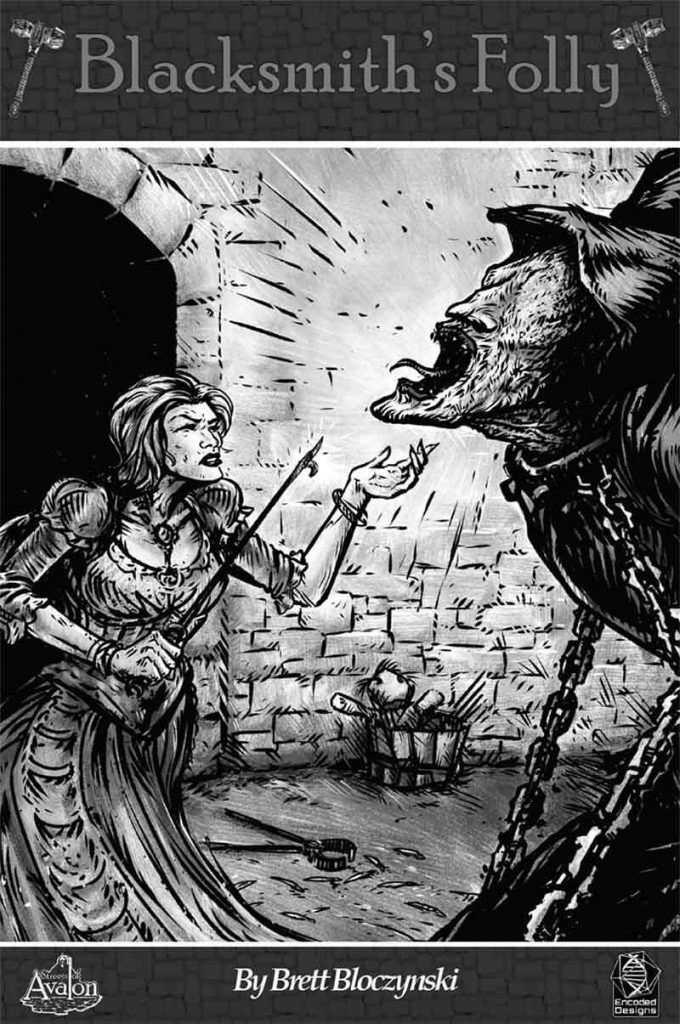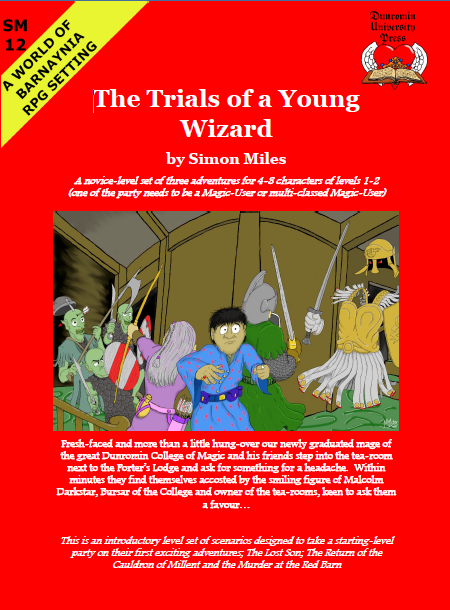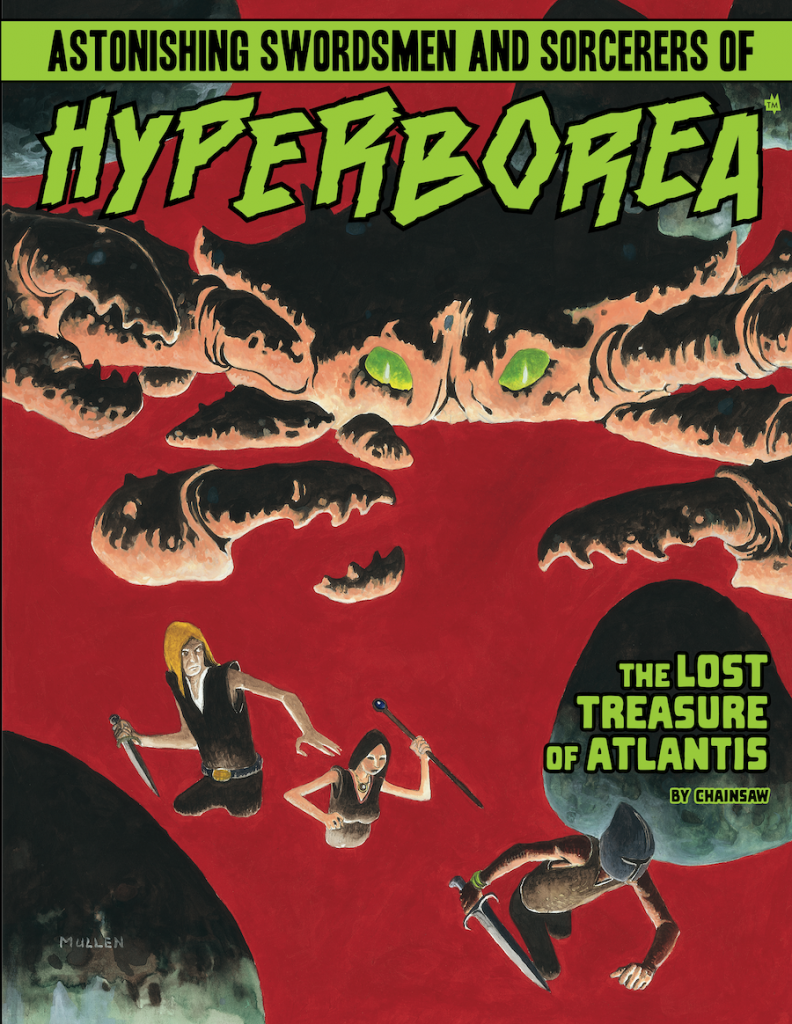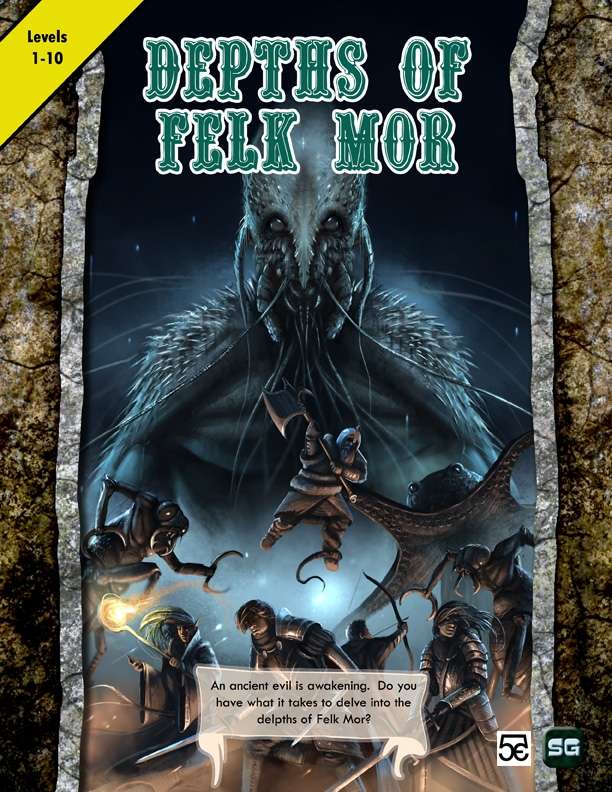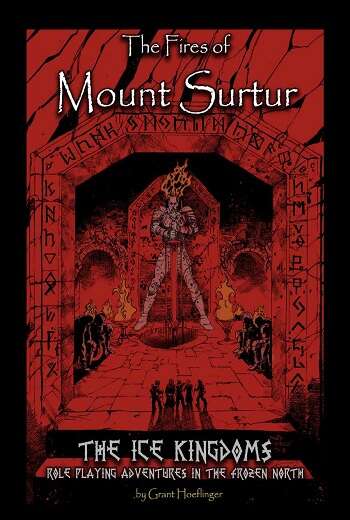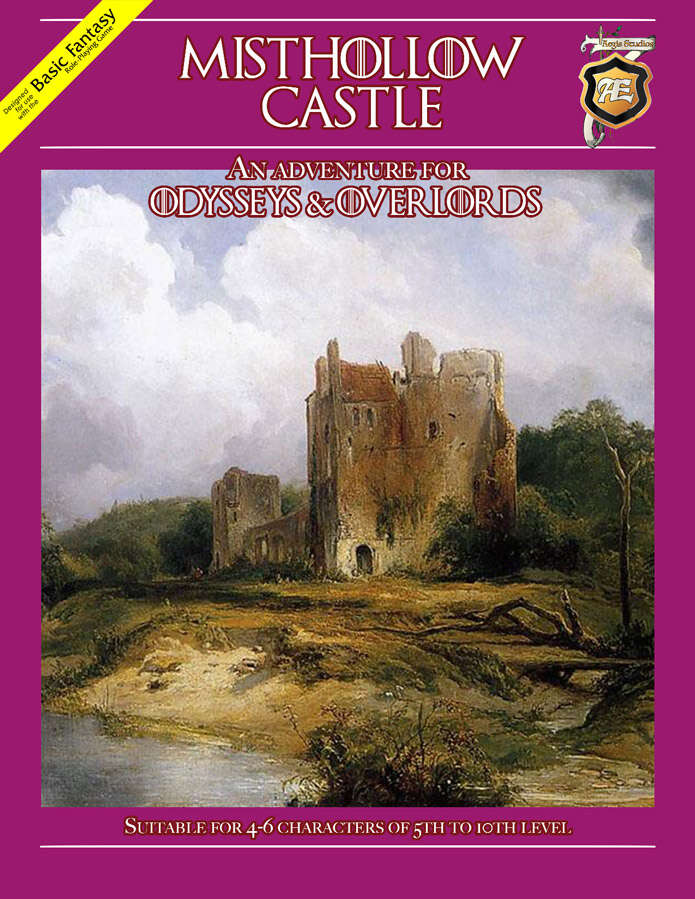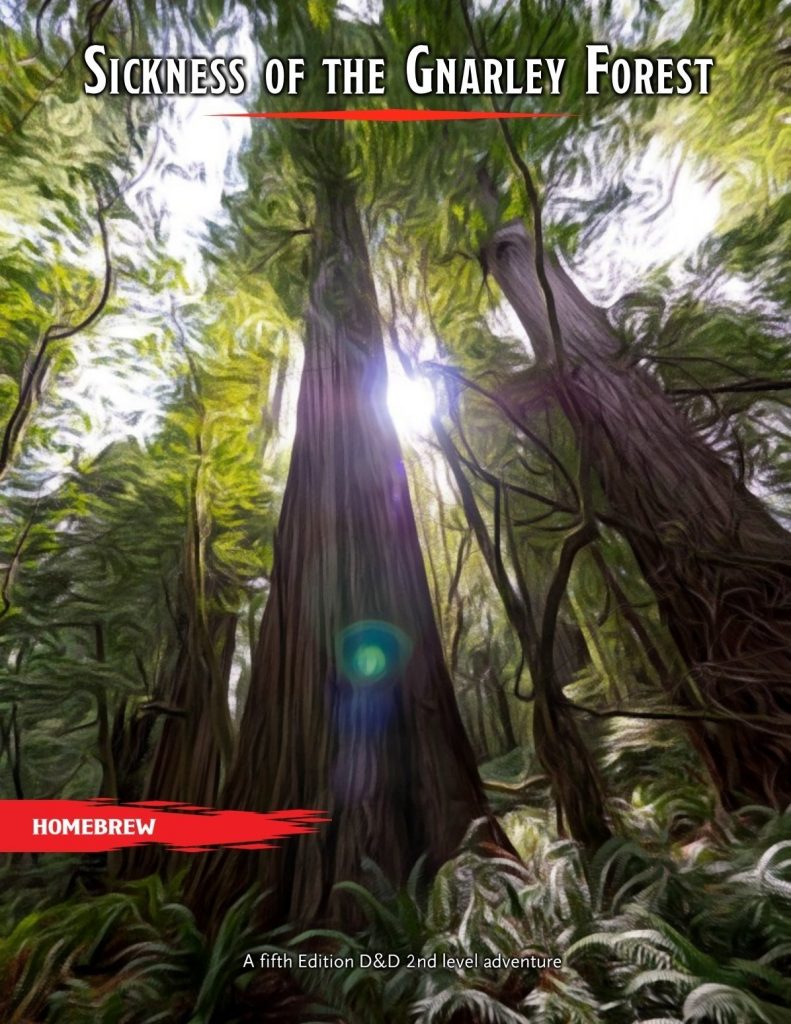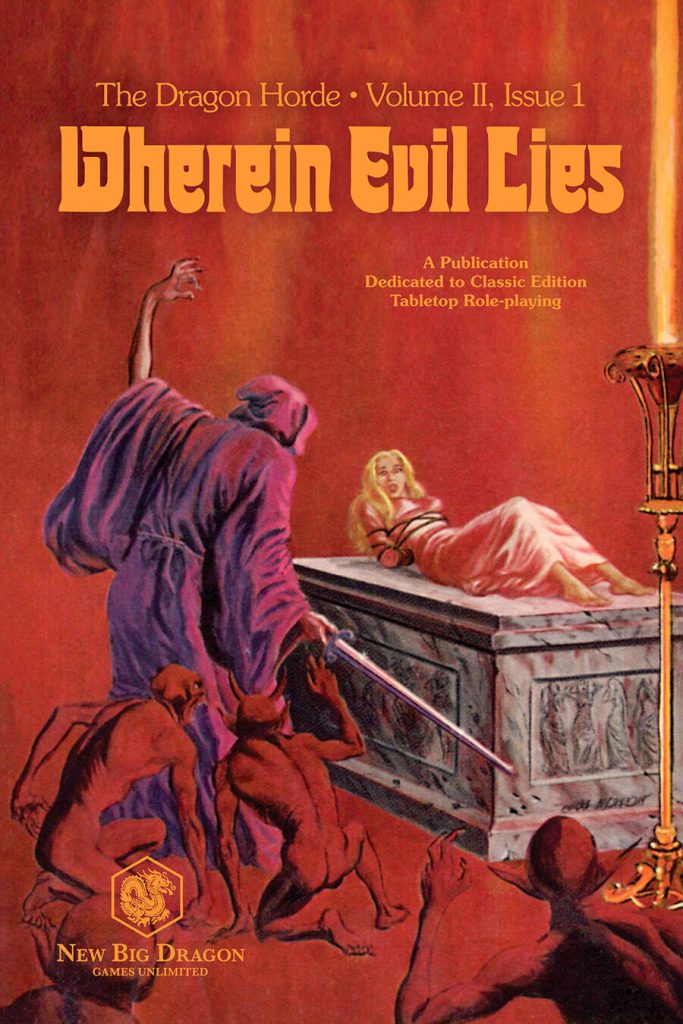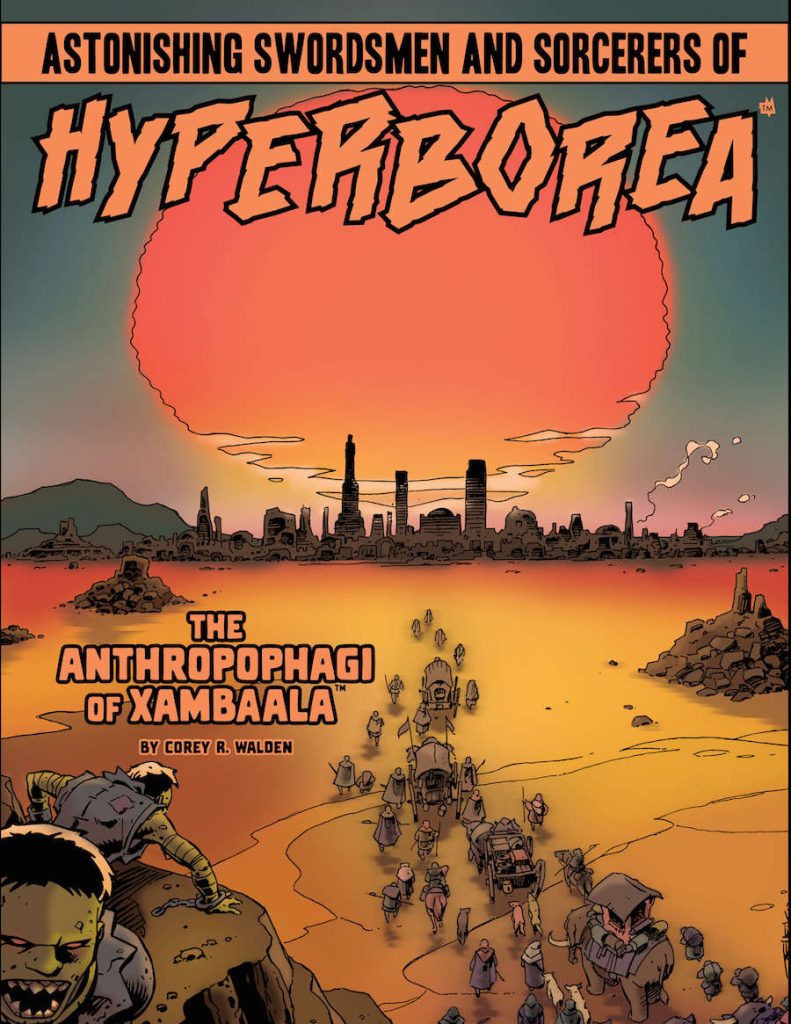
By Corey Walden North Wind Adventures AS&SH Levels 1-3
Furtive and odious tales circle through various Hyperborean ports of call. Rumours whisper of an ancient occult city, Xambaala, clinging to the edge of the Zakath Desert. Perhaps the hideous horrors said to assail the city in the darkest hours are exaggerated. Maybe too another explanation can be found for the foreigners who are said to have disappeared to some uncanny fate. But the whispering tongues also hint that gold glints in the shadows of Xambaala, ready to be taken by the bold.
This sixty page adventure details a desert trading city in about twenty pages, a couple of desert locales, and then a seventy-ish room three-level dungeon full of cannibals and snake-men. The primary adventure locale, the three level dungeon, is fairly interesting if a little heavy on the hack & trap side of the interactivity spectrum. While the writing is better than most North Wind adventures it is still burdened by the cramped layout and phrasing that plagues almost all of them. Do you like to READ adventures? Buy this.
It is pure speculation, but I suspect that the hand of Talanian and his editors are HEAVILY involved in the writing of these adventures. So many of them show the same issues that it’s hard to believe that the designers are all engaging in the same ponderous habits. As such the review becomes as much about the production style of North Wind as it does about what the designer has produced. How much is their work and how much is corruption by the snake-men?
What’s the purpose of an adventure? Is it to run a game at the table? That’s my take on them. And therefore I expect the adventure to facilitate that. But it is certainly the case that others, Paizo most notably, have deduced that most adventures purchased are never run. People buy them and read them and that’s the enjoyment they obtain. And thus the publisher is then working at a cross-purpose: to produce adventures that are enjoyable to read … and thus make money therein. They want to make money by writing something that appeals to the reader consumers. I want to have something to help me run it at the table. I guess it’s possible that the two are not mutually exclusive.Like, maybe, a quantum event suddenly turning my keyboard to old platinum is a possibility. Possible & probable: different definitions.
And I don’t give a FUCK about the readers. And I especially don’t give a MOTHER FUCK about the publishers who are writing for the readers. Fuck. You. You’re not producing adventures. You’re producing some fan service bullshit. Further, you’re producition of these fucking things is dragging the entire fucking hobby down because you insist of labeling them “adventures.” They are not adventures. Adventures are written to be used at the table. “It COULD be used at the table” is not a viable response. At this point I think it’s safe to say that North Wind is producing adventures meant to be consumed by reading.
The primary issues, as with ALL North Wind adventures, is the ponderous writing and the layout. The fonts are less legible but evocative of the pulp fiction novels of old. The margins are wide to allow border art … reducing the overall space for text. And the writing is ponderous. “The iron door has yielded to rust and the force of grave robbers.” That’s not technical writing meant to help the DM. That’s fiction writing. “In some areas the exterior plaster still retains its
original decorations of monsters, warlords, and illustrious merchants.” Again, more fiction writing. This is not a phrasing or word choice that enables the running of the adventure. The phrasing and word choice gets in the way. It’s ponderous. You don’t have to appeal to lowest common denominator. That’s not what this is about. You have to target the writing so that it’s easy for a DM to run. Making them fight through illustrious merchants and yielding to rust is not in service to that. That sort of writing is fiction writing. Technical writing, for D&D adventure, is in service, in these examples, of creating an image in the DM’s mind. Yielding to rust and Illustrious merchants doesn’t do that. And no, it’s not just those phrases. It’s the entire sentences. Which are just examples of the problems inherent to ALL of the writing in this adventure.
There ARE bullet point summaries at the start of each room. This DOES help somewhat. There is a style of writing in which general overview concepts, or the room, are introduced and as the players are mucking about deciding what to do, the DM is reading further ahead and/or the follow-up information helps expand on that general overview. The bullets in this adventure serve much the same purpose. They introduce room concepts quickly and then the DM gets to … wade through the ponderous text that follows, digging for more information. There are a lot of decent styles to choose from to help the DM, this is one, and it DOES help. It’s just dragged down by the “DM text” in the usual North Wind style.
It’s a shame. The core of the adventure isn’t bad. Cannibal slaves with sharp pointy teeth “Uh, Sir, I recommend that we examine the mouth of each slave and kill all of the ones with pointy teethe.” A cult, duped by snake men. A nice ruined palace to explore. Evil norse dwarves. A toad-woman. It’s all pretty good, in theory. Heavy on the combat, I think (especially for level 1’s) and on the trap side of interactivity. Some of the treasure is ok: a magic bow very briefly described to be of laminated white wood, or ion stones that “Once the gunk has been cleaned away, the stones will slip out and begin floating around the head of the investigating
Character.” That’s decent imagery, a little wondrous, which is what magic should be.
I don’t know man. I’ve always WANTED to like AS&SH. There are promises made by the setting that are great. But the execution of them is SO bad. I don’t see how this is usable at the table in any way that I would find meaningful to run. (Which is to say: easy.) It’s SO disappointing. And it seems so avoidable. There seems to be such a devotion to the style guide, over usability, and that’s what is making me question the actual intent of North Wind: playability vs just producing things to read. There has got to be some middle ground in which North Wind can still evoke the style they are going for while enhancing playability rather than detracting from it.
Also, first level my ass. This is a hard ass adventure.
This is $10 at DriveThru. The preview is four pages and shows you nothing of the adventure writing AT ALL. Just a map and the title pages. That’s a bad preview. For it’s faults, North Wind IS professional and I would expect a preview from them, on a $10 product, that actually shows us a few rooms and therefore the writing and content style of the adventure.
https://www.drivethrurpg.com/product/248582/The-Anthropophagi-of-Xambaala?1892600

